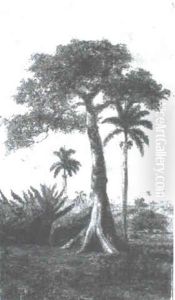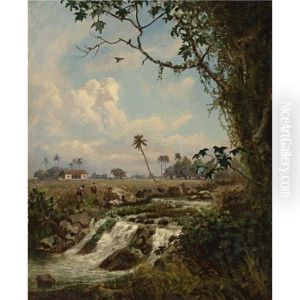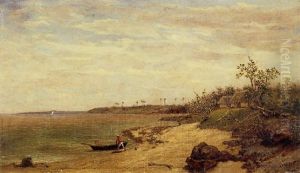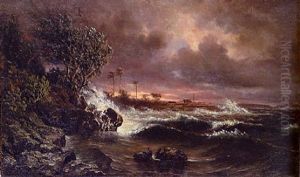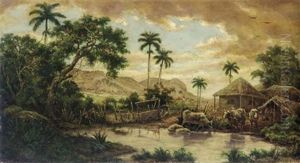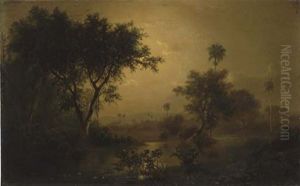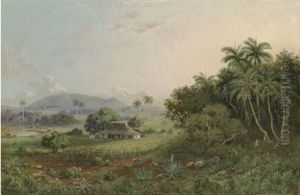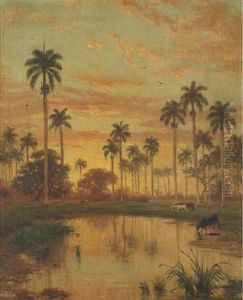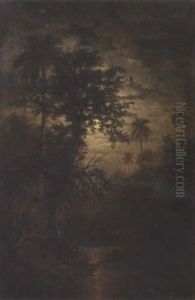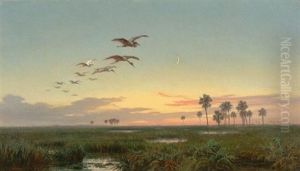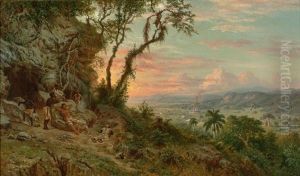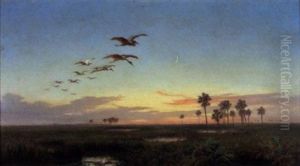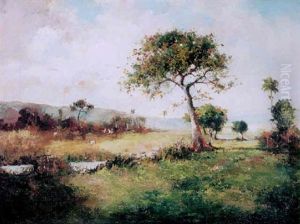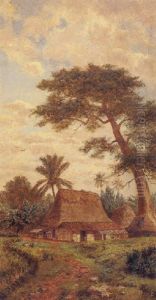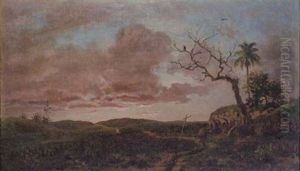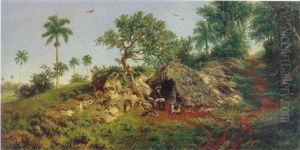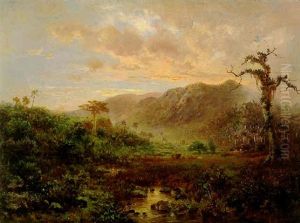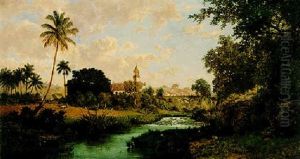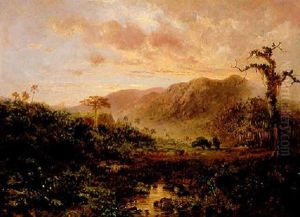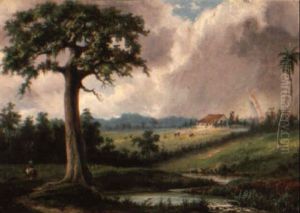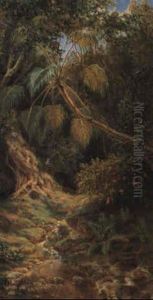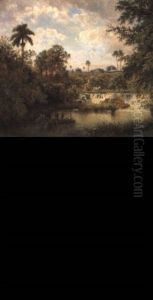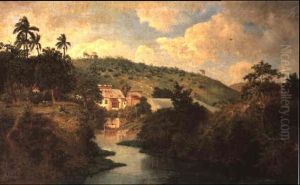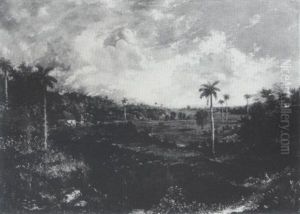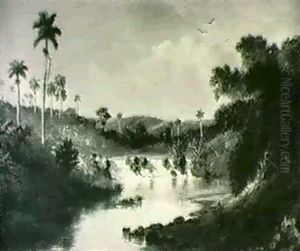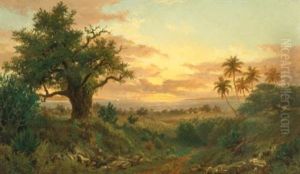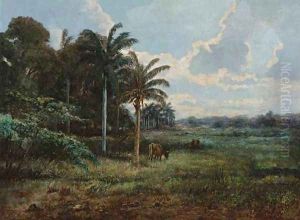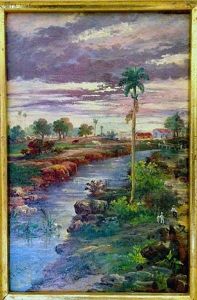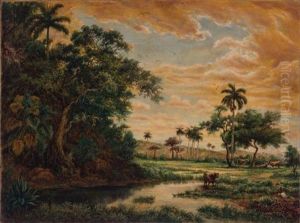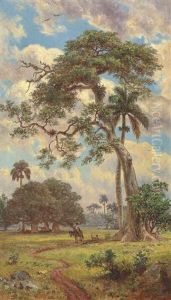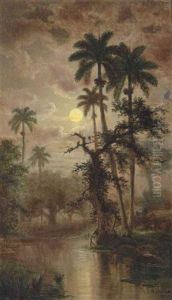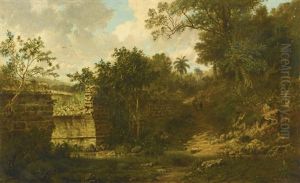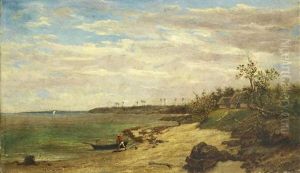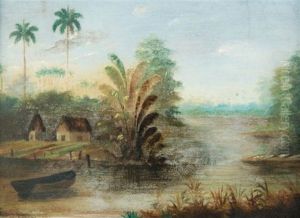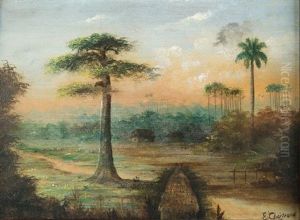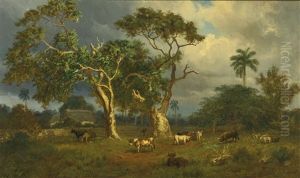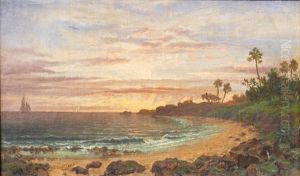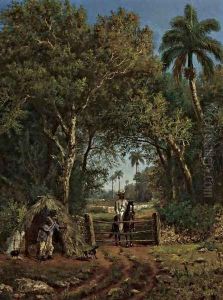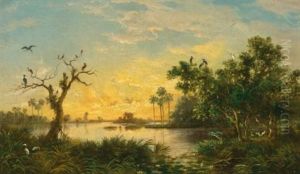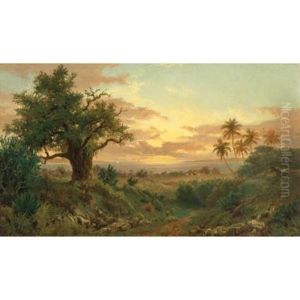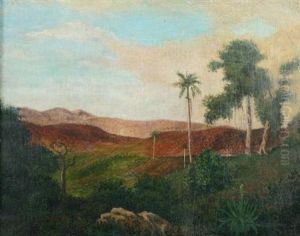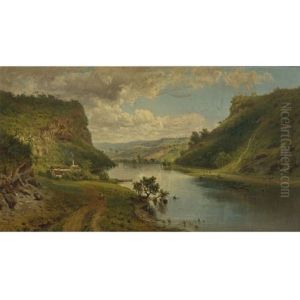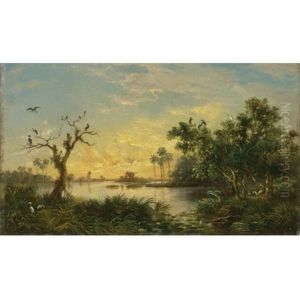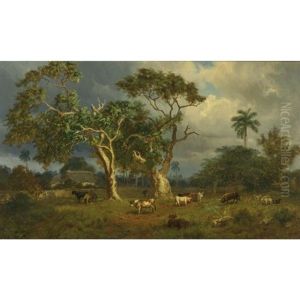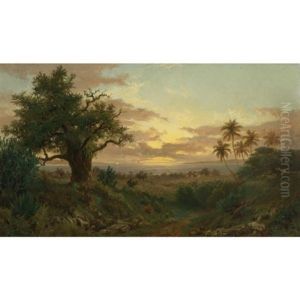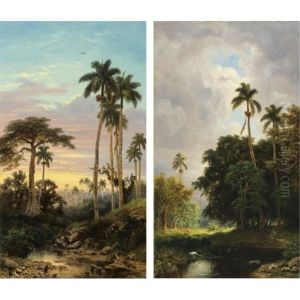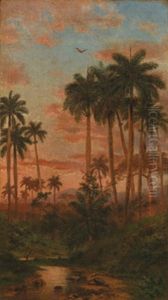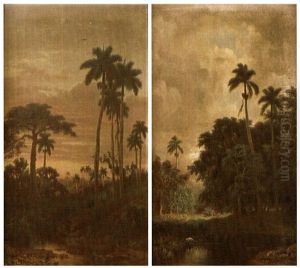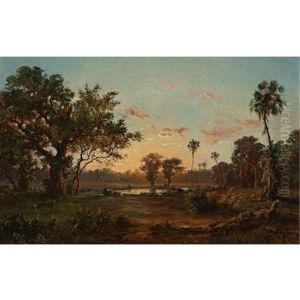Esteban Chartrand Paintings
Esteban Chartrand Dubois was a prominent 19th-century Cuban landscape painter, known for his romantic and realistic depictions of the Cuban countryside. Born in 1840 in the town of Tacón, which is now part of Havana, to a French father and a Cuban mother, Chartrand was exposed to a cultural blend of European and Caribbean influences that would later be reflected in his art.
Chartrand's early artistic training is not well-documented, but it is believed that he was largely self-taught, with possible guidance from local artists. His privileged background afforded him the opportunity to travel, and he likely drew inspiration from various European art movements of the time.
During his lifetime, Chartrand became one of Cuba's most celebrated painters. His landscapes typically featured lush Cuban scenery, often depicting the island's mountains, valleys, and tobacco fields with a sense of serene majesty and an eye for detail. His work captured the light and atmosphere of the Cuban environment, earning him critical acclaim and a place among the leading artists of the Cuban romantic school.
Despite his success, Chartrand's life was not without its challenges. He suffered from health issues, and his later years were marked by struggle and isolation. Chartrand continued to paint until his death in 1884, leaving behind a legacy that would influence future generations of Cuban artists.
Chartrand's work has been exhibited posthumously in various galleries and museums, and his paintings are considered national treasures in Cuba. They are celebrated for their contribution to the cultural and historical fabric of the island, depicting a Cuba that was on the cusp of significant political and social change. His art remains an important part of Cuba's national identity and continues to be studied and admired for its beauty and historical significance.
